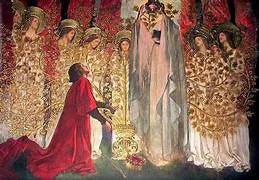
‘And sleeping there with his shield for a pillow, Lancelot dreamed … He dreamed that he was back on the threshold of the Grail chamber of Carbonek, seeing it all as it had been before … And he saw Galahad take up the spear and carry it to the Maimed King, and touch the gaping wound on his thigh with the blood that dripped from the blade … And he saw King Pelles rise whole and strong once more from the couch on which he lay … And then he woke; and the glory became the first sunlight slanting into his eyes, and the birds were singing as he had never heard them sing in the Waste Forest before, as though they were singing for the first morning of the world.’
Rosemary Sutcliff, The Light Beyond the Forest (1979)
I have the sense that the figure of Galahad in the various tales of the Holy Grail is somewhat misunderstood and under appreciated. The popular mind tends to view him as someone overly pure and perfect, not as relatable as his father Lancelot with his all-too-human (and illicit) love for Guinevere. Galahad, by comparison, is not quite ‘one of us.’ He has no weaknesses or blind spots, and though he achieves the Grail, heals the Maimed King and restores the Wasteland, his glorious triumph lacks dramatic tension because he has no inner obstacles - no character flaws or subtle temptations - to fight and overcome.
We can hardly blame ‘Joe Public’ for this attitude though, given the way the Arthurian tales have traditionally been told. Yet I’ve always felt vis-à-vis Galahad that there’s a lot going on beneath the surface and that there are mysterious dimensions to him - both priestly and kingly - that remain largely unexplored.
Galahad, for me, is an archetypal, mythopoetic champion of the first order. While Percivale and Bors become Grail-winners alongside him, it is Galahad alone who heals King Pelles and frees the waters that bring life back to the barren terrain of Carbonek. In Rosemary Sutcliff’s retelling, The Light Beyond the Forest (1979), Lancelot has a dream at the precise moment this great replenishment takes place. He hears a voice cry out in a tone reminiscent of the Prophet Isaiah:
‘Now the waters are loosed and the rivers shall run, and the Wasteland shall put forth wheat and the cattle bear many young, and the birds shall sing among the trees among the broad leaves of summer.’
This is a magnificent and immeasurably significant act of High Magic on Galahad’s part. It should be stressed, of course, that it is the Holy Grail and not Galahad himself that affects the transformation. But even so, it is Galahad and no-one else who holds the Grail Hallows, and the holy power that is in them works through his human presence to heal and redeem the human realm.
To bear the weight and pressure of such otherworldly force, it seems to me that something more is required than just high levels of purity and virtue. These things are not nothing, of course. They form a necessary basecamp. But to act in God's name and inaugurate epoch-defining change - deeds that leave a mark on the individual and collective soul - you need to have, surely, a deep and intimate relationship with the Divine font and source. You would have to be a mystic in other words, in active communion with the living God and his saints and angels.
Galahad is exactly this type of person, and there's huge scope for an imaginative retelling that arrows in on this mystical aspect. There are hints and suggestions of this in Sutcliff’s book. Galahad is portrayed, right from the start, as a Pentecostal figure. He makes his first appearance at King Arthur’s court on Pentecost Sunday, and when Lancelot sees him for the first time he has the impression of looking at ‘a spear blade or a still small flame.’ Later on, Galahad’s prowess in battle makes some onlookers think of the Archangel Michael, while in the final chapter he heals a beggar sitting at the gate of the sacred city of Sarras. There are echoes here with the Acts of the Apostles and the story of the cripple at the Beautiful Gate and St. Peter’s command, ‘By the power of Jesus Christ of Nazareth, stand up and walk.’ Peter heals through Christ’s name, Galahad through the Grail. Is there any essential difference between the two? Not in this context, I would suggest.
Charles Williams, in his first book of Arthurian poetry, Taliessin Through Logres (1938), also taps into this mystical stream. Galahad, for Williams, is not just a one-dimensional ‘goody-goody.’ He is also a man with a deep sense of empathy and a profound capacity for mental and spiritual suffering. In Percivale at Carbonek, Galahad, before entering the castle, kneels down and begs forgiveness from Lancelot for the pain and anguish his advent has caused his father:
His hand shook; pale were his cheeks; his head the head of a skull, flesh cleaving to bone; his dry voice rattled; 'Pardon, Lord Lancelot; pardon and blessing, father.'
In The Last Voyage, Galahad, Percivale and Bors, together with the Grail, set sail on the Ship of Solomon across the Western Sea towards Sarras. Galahad stands in the prow, holds aloft the Grail and prays out loud for those who died on the Quest or in the civil war that ravaged Britain afterwards:
His song was thick with a litany of names from the King and the KIng's friend to the least of the slaves ... The ban and blessing of the empire ran in his arms, from his feet the deck spread that was fleet on the sea The Ship of Solomon (blessed be he) drove on.
From these two writers alone, Williams and Sutcliff, we can catch something of the spiritual depths and riches in Galahad that can and should be further drawn out. For we have great need of these qualities in our world today - his Pentecostal fire, his Michaelic strength, his human empathy and, most of all, his close communion with God.
I would argue in fact that any leader we might be tempted to follow is worth nothing unless they are in close, direct communion with God. Clearly, this calls for no small measure of discernment, but it is through such singular individuals that the Divine Will enters into the sphere of human affairs.
Take St. Joan of Arc, for instance - a simple peasant girl whose visions of St. Michael, St. Margaret and St. Catherine imbued her with such force of personality that the beaten, bedraggled French army was transformed into a top-class fighting force and the course of the war with England turned permanently in France’s favour.
The Irish rebel leader Padraig Pearse (1879-1916) is another example. A gentle, introverted barrister, teacher and writer, he was also a prophet and a seer who saw deeply into the heart of things and understood the power of symbolic, sacrificial acts to inspire and renew the life of a people. In practical worldly terms, the Easter Rising of 1916 was doomed to fail from the outset. The rebels seized control of the General Post Office in Dublin and a handful of other buildings, but they could never realistically hope to hold out long against the military and economic might of the British Empire.
The Rising ‘failed’, therefore, yet just half a decade later Ireland had become a free state and had decisively embarked on the path to full independence and self-determination. This would have appeared a very remote outcome in the early months of 1916. Yet it happened. But why? I believe that the marked religious tone of the Rising played a significant (and today downplayed) role in its ultimate success. It began on Easter Monday and the lines for Communion and Confession in Dublin’s churches had been especially long - with many more men than usual - during the prior Easter weekend. The Rosary was prayed continuously in the Post Office throughout the Rising. Pearse himself was a mystic and a man of faith and prayer. So when you believe in the eternal worth and value of what you’re fighting for - as he did and as St. Joan did - and when you’re praying and communing with the Lord at the same time, it is as natural as day following night that God will match that level of commitment and trust and grant, in His own time and way, the prayers of those who act in His name.
We only get a glimpse though; a brief and dazzling flash. It never seems to last that long. The Grail vanishes from our sight, the Round Table dissolves, and Arthur’s holy realm of Logres subsides into the workaday grittiness of modern Britain. Has Ireland, for example, made the most of her hard-won independence? Is she not in the process of throwing it away right now - not just politically but spiritually and culturally too? These are questions worth pondering. As for France, one thing is sure - St. Joan did not go to the stake so that the anti-hierarchical, anti-traditional animus of the French Revolution could take such deep and poisonous root in her homeland and elsewhere.
Yet the gesture is real. It takes root in the heart and burns itself into the psyche. Once made, it cannot be unmade. It resides there in our ancestral memory waiting for the supreme moment - the Kairos - to take on flesh in the world again.
Galahad’s healing of the Maimed King and his subsequent renewal of the Wasteland is the grand archetype behind and above all this. It is a master symbol and a supreme story and image to meditate on as we ourselves commune with God and ask in our turn for the grace, strength and Heavenly benediction to heal and bless this broken world, to set the waters free once more, and renew and restore the Wasteland of our own time and place.

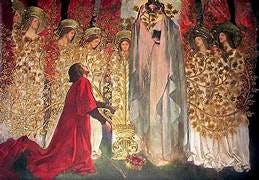


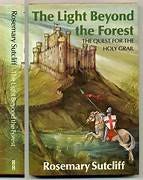

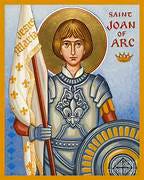
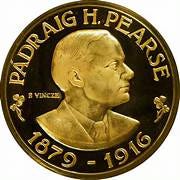
Beautiful.